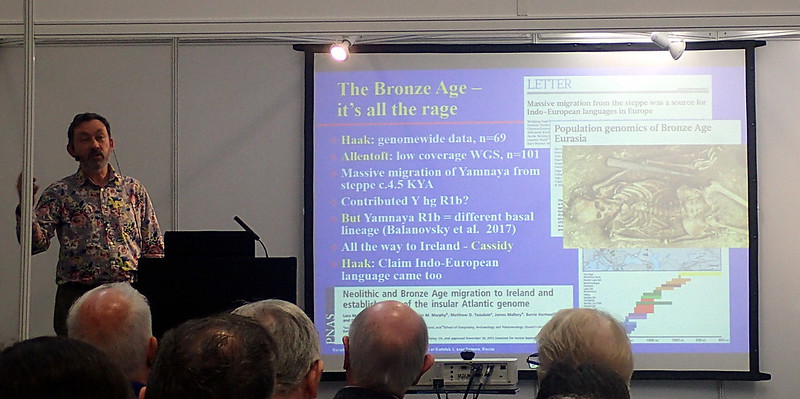If there is anyone out there reading this blog, you know my recorded ancestry - all SE English, mainly East Anglian. No recorded evidence of anything but English over the past two or three centuries. This is not to say that I don't think any actually happened.
51% British might seem low for an Englishman - but I'm aware that my personal DNA flavour is a bit atypical for a Brit, more Continental. My Origins 1.0 gave me 36% British. 23andMe un-phased gives me 32% British / Irish. I do however suspect that my flavour isn't so atypical for an East Anglian of local rural ancestry. Living DNA gave me the most, a whopping 74% British. Therefore on that score, you could say that for myself, My Origins 2.0 actually comes in at 2nd place - better than 23andMe, DNA.land, or WeGene. I'm currently waiting for Ancestry.com results, but I'm not expecting better.
46% West and Central European where I have no record of any such ancestry - but East Anglian has been noted as close to North German, and certainly, SE England has plenty of early medieval admixture from that part of the world during the Anglo-Saxon event. In addition, we've continued to have immigration from the Continent over the past several hundred years, particularly but not exclusively, from the Netherlands and Northern France. I recently noticed that a 5xgreat grandparent had the surname Moll that is often found in Germany. However, it is also found in East Anglia, but are they connected? One day I'll find a recorded non-English ancestor! So as an East Anglian, I forgive autosomal DNA for ancestry algorythms that suggest that I have Dutch, German, French, or Danish ancestry. 23andMe (un-phased) gave me 27% French & German". Even Living DNA gave me 4.6% Scandinavian and 2% Germanic.
Now the Traces. I find these really interesting. Because they could fit in with other evidence. The My Origins 2.0 "Southeast European" designation appears to include Italy. My Origins 1.0 gave me a very silly 32% Southern European. 23andMe gave me 2% Southern European (although I have noted that the majority of English testers get a small percentage of this). Living DNA gave me a whopping 9.6% Tuscany. A friendly discussion with one of the LDNA techs, suggested that it looked to them, to be genuine. There was a family story on my father's side, that there was a "foreigner" - but I've never found any recorded evidence. I've scanned and scanned the tree for any sign, but nada. Not in great gp to 3 x great gp range. I'm open to a possible NPE, but I need more evidence than one auDNA test result.
The trace West Middle East and Ashkenazi are interesting, because although I have no recorded West Middle East or Ashkenazi ancestry, my Y-DNA does originate in SW Asia, possibly the area of Iran or Iraq. However, no auDNA test or GEDmatch calculator so far has provided any surviving evidence in the autosomes of any Asian, above that of average for a Brit. It all appeared washed out by genetic recombination. I share my Y with another family (different surname) from England, and we trace our lines back to the 1740's in Southern England (32 miles apart). That to me suggests that our immigrant Y ancestor most likely arrived in Southern England at least 400-500 years ago. I suspect earlier, maybe Medieval or even Roman. However, has the new algorithm picked something up? Maybe just a coincidence. The nearest non-English STR tester to us hailed from South Khorasan, Iran
A better prediction for myself than the My Origins 1.0 (below).
































